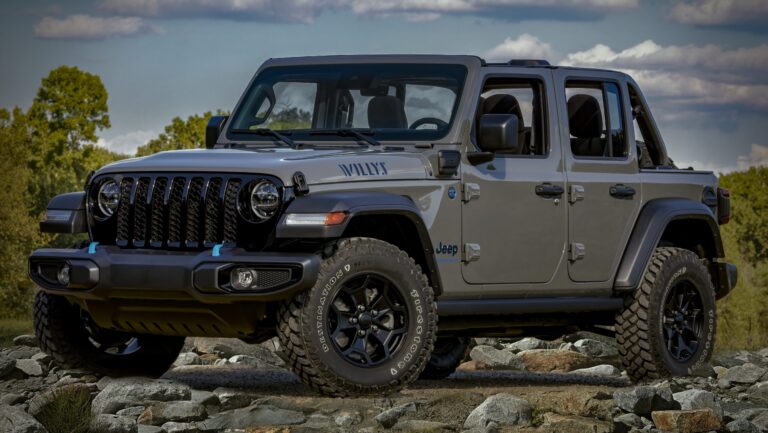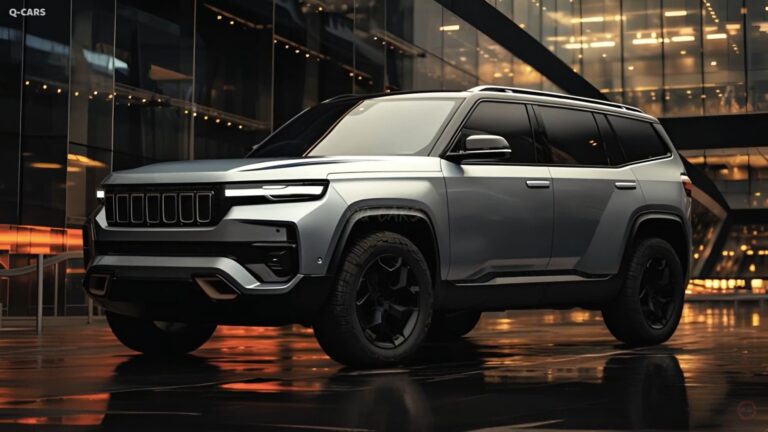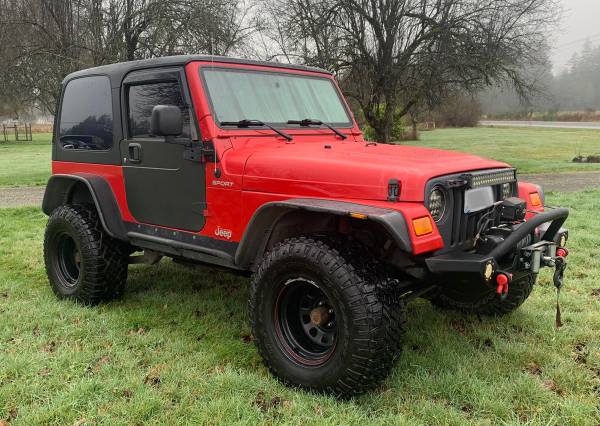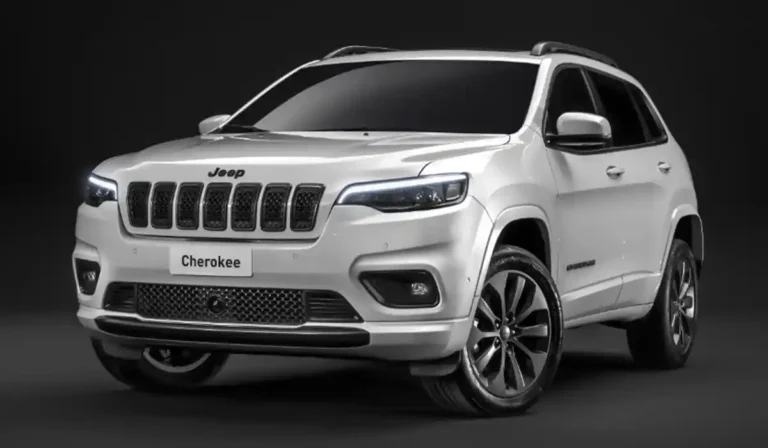Jeep Wrangler Or Rubicon: Choosing Your Ultimate Off-Road Companion
Jeep Wrangler Or Rubicon: Choosing Your Ultimate Off-Road Companion jeeps.truckstrend.com
The image of a Jeep Wrangler, with its iconic seven-slot grille, round headlights, and removable top, is synonymous with adventure, freedom, and unparalleled off-road capability. For decades, it has been the go-to vehicle for enthusiasts seeking to conquer the most challenging terrains, from rocky trails to muddy paths. Within the revered Wrangler lineage, however, one name stands out as the ultimate expression of factory-built off-road prowess: the Rubicon.
This article serves as a comprehensive guide to understanding the nuances of the Jeep Wrangler family, with a particular focus on distinguishing the standard Wrangler models from the specialized Rubicon. Whether you’re a seasoned off-roader or a newcomer dreaming of trail adventures, navigating the options can be daunting. We’ll delve into what makes each variant unique, their respective strengths, and ultimately help you decide which legendary Jeep is the perfect companion for your adventures.
Jeep Wrangler Or Rubicon: Choosing Your Ultimate Off-Road Companion
The Enduring Allure of the Jeep Wrangler
The Jeep Wrangler is more than just a vehicle; it’s a lifestyle. Its roots trace back to the rugged military vehicles of World War II, evolving into the civilian powerhouse we know today. What sets the Wrangler apart is its unwavering commitment to off-road functionality, a characteristic that remains largely unchanged through generations.
At its core, every Wrangler embodies key design principles: a body-on-frame construction for durability, solid front and rear axles for articulation and strength, and a robust 4×4 system. The ability to remove doors, fold down the windshield, and take off the roof offers an open-air driving experience unlike any other, connecting drivers directly with their surroundings.
The Wrangler lineup is diverse, offering various trim levels beyond just the Rubicon. These include the entry-level Sport, the more feature-rich Sahara, and the rugged Willys, among others. Each trim offers a different balance of comfort, technology, and off-road readiness, catering to a wide range of needs and budgets. While all Wranglers are inherently capable off-road, their levels of factory-equipped features for extreme terrain vary significantly, leading us to the pinnacle of the lineup: the Rubicon.
Unpacking the Rubicon: Engineered for Extremes
The "Rubicon" isn’t a separate model from the Wrangler; it is a specific, highly specialized trim level designed to tackle the most demanding off-road trails straight from the factory. Named after the infamous Rubicon Trail in California – one of the most challenging off-road routes in the world – this trim is equipped with a suite of features that elevate its capability far beyond standard Wranglers.
What makes a Rubicon truly special? It’s a combination of specific, heavy-duty components meticulously engineered for extreme terrain:
- Heavy-Duty Dana 44 Axles: Both the front and rear axles on a Rubicon are upgraded to robust Dana 44 units, which are stronger and more durable than the Dana 30 or Dana 35 axles found on lower trims. This increased strength is crucial for handling the stresses of large tires and extreme articulation.
- Electronic Front and Rear Locking Differentials (Tru-Lok): This is perhaps the most significant differentiator. At the push of a button, the Rubicon allows you to electronically lock the front and/or rear differentials. When locked, both wheels on an axle receive equal power, ensuring maximum traction even if one wheel is completely off the ground. This is invaluable for climbing over large obstacles or navigating deep ruts.
- Electronic Sway Bar Disconnect: Another game-changing feature for off-roading. The Rubicon’s front sway bar can be electronically disconnected, allowing for increased wheel articulation. This means the wheels can move up and down independently to a greater degree, keeping more tire on the ground over uneven terrain and improving traction.
- Rock-Trac 4×4 System: The Rubicon comes standard with Jeep’s Rock-Trac 4×4 system, featuring a 4:1 low-range gear ratio (compared to the 2.72:1 ratio in the Command-Trac system found on other trims). This ultra-low gearing provides incredible torque multiplication at low speeds, allowing for precise control and crawling power over challenging obstacles.
- Enhanced Ground Clearance and Tires: Rubicon models typically come with larger, more aggressive off-road tires (often 33-inch from the factory, with an optional 35-inch Xtreme Recon package). These larger tires, combined with a slightly taller stance, contribute to superior ground clearance, approach, breakover, and departure angles, reducing the likelihood of scraping the undercarriage.
- Steel Rock Sliders: Integrated steel rock sliders protect the rocker panels (the body area between the front and rear wheels) from damage when navigating over rocks and other obstacles.

These features collectively transform the Rubicon into a factory-ready rock-crawling machine, capable of tackling trails that would leave many other 4x4s stranded.
The Core Dilemma: Wrangler vs. Rubicon – Capability, Cost, and Purpose
The fundamental question for many prospective Jeep owners boils down to this: Do I need a Rubicon, or will a standard Wrangler suffice? The answer hinges on your intended use, budget, and appetite for aftermarket modifications.
![]()
-
Capability:
- Standard Wrangler (Sport, Sahara, Willys): These trims are incredibly capable off-road for the vast majority of users. They can handle moderate trails, forest roads, sand dunes, and light rock crawling with ease. For weekend adventurers, campers, or those who simply enjoy the Jeep lifestyle with occasional dirt road excursions, a standard Wrangler offers more than enough capability.
- Rubicon: This is for the serious off-road enthusiast who plans to tackle extreme rock crawling, deep mud, or highly technical trails regularly. The factory lockers, sway bar disconnect, and lower gearing make a noticeable difference in these extreme scenarios, providing a level of confidence and capability that is unmatched by other stock vehicles.
-
Cost:
- The Rubicon trim commands a significant price premium over the Sport or Sahara. This additional cost reflects the specialized, heavy-duty components and advanced 4×4 systems it includes. For those on a tighter budget, a lower trim Wrangler can be a more accessible entry point into Jeep ownership.
-
Purpose & Modification Potential:
- Standard Wrangler: An excellent blank canvas for customization. Many owners choose a Sport or Willys and then add aftermarket parts (lift kits, larger tires, lockers) to tailor the vehicle to their specific needs. While it can be more expensive and time-consuming than buying a Rubicon outright, this path allows for a highly personalized build. You can build a non-Rubicon to approach Rubicon capability, but achieving the exact factory integration of features like the electronic sway bar disconnect can be challenging or costly.
- Rubicon: For those who want maximum capability right off the lot, the Rubicon is the clear choice. It requires fewer immediate modifications for serious off-roading. Owners might still upgrade tires, add armor, or further customize it, but the core off-road foundation is already superior.
The Driving Experience: On-Road Comfort vs. Off-Road Prowess
While the allure of the Wrangler is its off-road prowess, most owners spend a significant amount of time driving on pavement.
- On-Road: All Wranglers have a distinct driving feel. They are not as refined or quiet as car-based SUVs. The solid axles and off-road suspension can lead to a bouncier ride, and wind noise is more prevalent due to the removable roof and doors. The Rubicon, with its larger, more aggressive tires and specialized suspension, can be slightly less comfortable and noisier on pavement compared to a Sahara or Sport with more street-oriented tires. The wider stance and beefier components also contribute to a less "car-like" feel in daily driving.
- Off-Road: This is where the Rubicon truly shines. The electronic lockers provide incredible traction on slippery or uneven surfaces. The sway bar disconnect allows for impressive articulation, keeping all four wheels planted over obstacles. The low gearing of the Rock-Trac system makes precise, slow-speed maneuvering effortless, minimizing throttle input and reducing stress on the drivetrain. While a standard Wrangler performs admirably on many trails, the Rubicon instills a higher level of confidence when facing extreme obstacles, allowing drivers to tackle more challenging lines with less effort.
Customization: Tailoring Your Jeep to Your Adventure
One of the most appealing aspects of Jeep ownership, regardless of trim, is the vast aftermarket support and the endless possibilities for customization.
-
For the Standard Wrangler: If you purchase a Sport or Sahara, you have an excellent foundation for building a highly capable off-road vehicle. Common modifications include:
- Lift Kits: To accommodate larger tires and increase ground clearance.
- Larger Tires: For improved traction and obstacle clearance.
- Aftermarket Bumpers and Winches: For protection and recovery.
- Aftermarket Lockers: To improve traction similar to the Rubicon’s factory lockers.
- Re-gearing: To compensate for larger tires and restore optimal power.
This path allows you to spread out the cost of upgrades over time and build a vehicle precisely suited to your needs and aesthetic preferences.
-
For the Rubicon: While already supremely capable, Rubicon owners still love to customize. Common upgrades include:
- Even Larger Tires: Pushing past 35 inches for extreme builds.
- Heavy-Duty Armor: Skid plates, rock sliders (beyond stock), and corner guards for maximum protection.
- Advanced Suspension Systems: Coil-overs or long-arm kits for even greater articulation and comfort over rough terrain.
- Lighting and Recovery Gear: Winches, light bars, and recovery boards are popular additions.
The advantage here is that you’re building on an already robust and capable platform, often focusing on enhancing specific aspects rather than fundamental capability.
Making the Informed Choice: Key Considerations Before You Buy
Before making a significant investment in a Jeep Wrangler, consider the following:
- Assess Your True Off-Roading Needs: Be honest with yourself. Do you genuinely plan to tackle extreme rock crawling every weekend, or are your adventures more likely to involve forest service roads and moderate trails? Overspending on Rubicon features you’ll rarely use might not be the most practical decision.
- Budget Beyond the Purchase Price: Factor in insurance, fuel economy (Wranglers aren’t known for being gas sippers, especially the Rubicon with larger tires), and potential aftermarket modifications.
- Daily Driving Comfort: If the Jeep will be your primary daily driver, be prepared for its unique on-road characteristics. The Rubicon’s specialized features can make it a bit more "raw" in everyday driving.
- Maintenance and Durability: Wranglers are robust, but like any dedicated off-road vehicle, they may require more hands-on maintenance, especially if pushed to their limits.
- Test Drive Both: If possible, test drive a standard Wrangler (Sport or Sahara) and a Rubicon. Experience the differences firsthand, both on pavement and, if possible, on a light off-road course. This direct comparison will be invaluable.
- Resale Value: Jeep Wranglers generally hold their value exceptionally well, and the Rubicon trim often commands a premium in the used market due to its desirability and specialized features.
Practical Advice and Actionable Insights
- Start with your "why": Why do you want a Jeep Wrangler? What kind of adventures do you envision? Your answer will guide your trim choice.
- Don’t fear the base model: A Sport or Willys is an incredibly capable vehicle and an excellent starting point for those who want to learn off-roading or build their Jeep gradually.
- Consider the 4xe: For those seeking better fuel economy and instant torque, the Wrangler 4xe (plug-in hybrid) is available in Sahara, Willys, Rubicon, and High Altitude trims, offering a compelling blend of efficiency and power.
- Factor in the long-term: Think about future modifications. If you plan a big lift and larger tires on a non-Rubicon, you might eventually spend close to the Rubicon’s price after upgrades.
Concluding Summary
The choice between a Jeep Wrangler and a Jeep Wrangler Rubicon ultimately comes down to a careful balance of intended use, budget, and personal preference. The standard Wrangler trims offer an unparalleled blend of iconic style, open-air freedom, and robust off-road capability that satisfies the vast majority of adventurers. It’s a versatile platform, perfect for daily driving with plenty of weekend warrior potential, and an excellent canvas for personalization.
The Rubicon, on the other hand, is a purpose-built machine, engineered from the factory to conquer the most challenging terrain imaginable. Its specialized components like locking differentials, electronic sway bar disconnect, and ultra-low gearing provide an undeniable advantage for serious rock crawling and extreme off-roading.
Neither is inherently "better" than the other; they simply cater to different levels of off-road ambition and budget. By honestly assessing your needs and understanding the unique attributes of each, you can confidently choose the Jeep Wrangler that will truly unlock your spirit of adventure.
Jeep Wrangler & Rubicon Price Table (Estimated Starting MSRP for 2024 Models)
| Trim Level | Drivetrain | Body Style | Starting MSRP (2-Door) | Starting MSRP (4-Door/Unlimited) | Key Feature Highlight |
|---|---|---|---|---|---|
| Wrangler Sport | 4×4 | 2-door | $32,695 | $36,295 | Entry-level icon, Command-Trac 4×4, removable top/doors |
| Wrangler Willys | 4×4 | 2-door | $38,195 | $42,195 | Off-road styling, rear locker (optional), 33-inch tires |
| Wrangler Sahara | 4×4 | 4-door | N/A | $47,120 | Premium interior, body-color fenders, refined for daily use |
| Wrangler Rubicon | 4×4 | 2-door | $45,995 | $49,995 | Rock-Trac 4×4, Tru-Lok Front/Rear Lockers, Electronic Sway Bar Disconnect, Dana 44 Axles |
| Wrangler Rubicon X | 4×4 | 2-door | $55,995 | $59,995 | Steel bumpers, Nappa leather, Xtreme 35-inch Tire Package |
| Wrangler Rubicon 392 | 4×4 | 4-door | N/A | $93,495 | 6.4L HEMI V8 engine (470 HP), Fox shocks, extreme performance |
| Wrangler Sahara 4xe | PHEV 4×4 | 4-door | N/A | $52,595 | Plug-in Hybrid, instant torque, good fuel economy |
| Wrangler Rubicon 4xe | PHEV 4×4 | 4-door | N/A | $61,295 | Rubicon capability with hybrid efficiency |
Note: Prices are estimated starting Manufacturer’s Suggested Retail Prices (MSRPs) for the 2024 model year in the U.S. and do not include destination charges, taxes, options, or dealer markups. Actual prices may vary significantly based on configuration, region, and market conditions.
Frequently Asked Questions (FAQ) about Jeep Wrangler & Rubicon
Q1: Is the Rubicon worth the extra cost?
A1: It depends entirely on your intended use. If you plan to tackle highly challenging trails, engage in serious rock crawling, or simply want the most capable factory-built off-roader, the Rubicon’s specialized features (lockers, sway bar disconnect, lower gearing) make it well worth the premium. If your off-roading is limited to moderate trails, dirt roads, or you mostly drive on pavement, a lower trim Wrangler is likely sufficient and more cost-effective.
Q2: Can a non-Rubicon Wrangler go off-road?
A2: Absolutely! All Jeep Wranglers are incredibly capable off-road. Even the base Sport model, with its Command-Trac 4×4 system, solid axles, and high ground clearance, can handle a wide variety of trails, mud, sand, and light rock crawling. Many owners build highly capable off-road rigs from non-Rubicon Wranglers through aftermarket modifications.
Q3: What’s the main difference between a Sport, Sahara, and Rubicon?
A3:
- Sport: The entry-level, most basic, and most affordable trim. It offers core Wrangler capability and is a popular choice for those who want to customize heavily.
- Sahara: A more premium trim focused on comfort and technology. It often comes with body-color fenders, upgraded interiors, and more creature comforts, while still retaining strong off-road capability.
- Rubicon: The dedicated off-road king. It includes specific heavy-duty components like electronic locking differentials, an electronic sway bar disconnect, Dana 44 axles, and the Rock-Trac 4×4 system for extreme terrain.
Q4: Is the Rubicon good for daily driving?
A4: The Rubicon can be a daily driver, but it prioritizes off-road performance over on-road comfort. Its larger, more aggressive tires and specialized suspension can lead to a slightly bouncier ride, more road noise, and less precise handling compared to a typical SUV. If comfort and quiet on pavement are high priorities, other Wrangler trims or different vehicles might be a better fit.
Q5: Do Rubicons have better resale value?
A5: Generally, yes. Jeep Wranglers, in general, hold their value exceptionally well, thanks to their iconic status and strong demand. The Rubicon trim, being the top-tier off-road model, often commands a premium in the used market due to its factory-equipped capabilities and desirability among enthusiasts.
Q6: What’s the best engine for a Wrangler/Rubicon?
A6: The "best" engine depends on your priorities:
- 3.6L Pentastar V6: The traditional and most common engine, known for its proven reliability and smooth power delivery. Good all-around choice.
- 2.0L Turbo I4: Offers excellent low-end torque and better fuel economy than the V6, making it a punchy option for both daily driving and off-roading.
- 4xe (Plug-in Hybrid): Combines the 2.0L turbo with electric motors for impressive instant torque, silent electric-only off-roading, and significantly better fuel economy.
- 6.4L HEMI V8 (Rubicon 392): For ultimate power and performance, delivering an exhilarating driving experience on and off-road, but with significantly higher fuel consumption and price.
Q7: What is the Rock-Trac 4×4 system?
A7: The Rock-Trac 4×4 system is a specialized transfer case found exclusively on Rubicon models. Its key feature is an ultra-low 4:1 low-range gear ratio (compared to the 2.72:1 ratio in other Wrangler 4×4 systems). This provides extreme torque multiplication, allowing the Rubicon to crawl very slowly and precisely over large obstacles with minimal throttle input, making it ideal for technical rock crawling.




